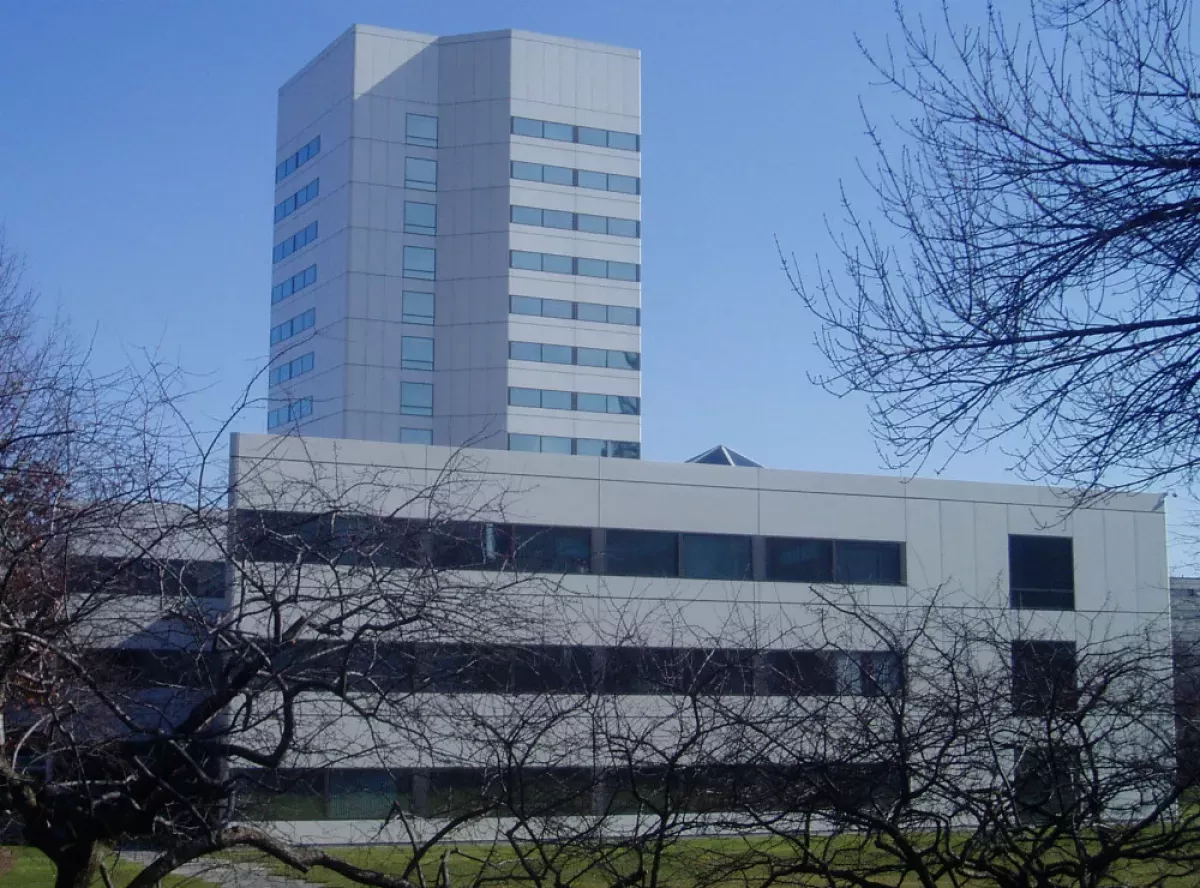Johnson & Johnson (J&J) is a leading American multinational corporation specializing in pharmaceuticals, biotechnology, and medical technologies. Headquartered in New Brunswick, New Jersey, J&J is a publicly traded company listed on the New York Stock Exchange and a constituent of the Dow Jones Industrial Average. The company holds a prominent position among the largest corporations globally, securing the 40th spot on both the Fortune 500 and Forbes Global 2000 lists in 2023. With a vast workforce of approximately 130,000 individuals, J&J operates under the leadership of Joaquin Duato, who serves as both chairman and CEO.
1900: Johnson & Johnson Aids in Galveston Hurricane Relief
In the wake of the devastating 1900 Galveston hurricane, Johnson & Johnson stepped forward to provide much-needed assistance. The company donated its products to support the disaster relief efforts, demonstrating its commitment to helping communities in times of crisis.
1901: Johnson & Johnson Vaccinates Employees During Smallpox Epidemic
During the 1901 smallpox epidemic, Johnson & Johnson prioritized the health and safety of its workforce by vaccinating all its employees against the disease.
1901: Johnson & Johnson Publishes First Aid Handbook
In 1901, recognizing the importance of accessible medical guidance, Johnson & Johnson published the "Handbook of First Aid." This comprehensive guide provided the public with essential knowledge and practical instructions on administering first aid.
1904: Johnson & Johnson Introduces "Lister's Sanitary Diapers"
Expanding its product line in 1904, Johnson & Johnson introduced "Lister's Sanitary Diapers," an innovative diaper product specifically designed for infants. This marked another step in the company's commitment to baby care.
1905: Johnson & Johnson Trademarks the Red Cross Symbol
Johnson & Johnson registered the Red Cross as a U.S. trademark for "medicinal and surgical plasters" in 1905, despite the Red Cross emblem being reserved for specific uses by the Geneva Conventions since 1864.
1905: Johnson & Johnson's Trademark Remains Valid
The U.S. reservation to the 1949 Geneva Conventions acknowledged the validity of Johnson & Johnson's pre-existing trademark of the Red Cross symbol.
1906: Johnson & Johnson Provides Aid After San Franscisco Earthquake
Following the devastating 1906 San Francisco earthquake, Johnson & Johnson once again demonstrated its commitment to aiding disaster-stricken communities. The company donated its products to support the relief efforts, offering essential supplies to those impacted by the disaster.
1910: Johnson & Johnson Employs Over 1,200 People
By 1910, Johnson & Johnson had experienced significant growth, employing a workforce of over 1,200 individuals. Notably, women constituted a significant portion of this workforce, accounting for half of the company's employees and holding leadership positions in a quarter of its departments.
1910: Robert Wood Johnson Passes Away, James Wood Johnson Becomes President
In 1910, Johnson & Johnson experienced a significant leadership transition. Robert Wood Johnson, one of the founding brothers, passed away, and his brother, James Wood Johnson, assumed the role of president, carrying on the company's legacy.
1916: Johnson & Johnson Acquires Chicopee Manufacturing Company
To address the escalating demand for sterile surgical products during World War I, Johnson & Johnson acquired Chicopee Manufacturing Company in Chicopee Falls, Massachusetts, in 1916. This strategic move bolstered the company's production capabilities, enabling it to meet the wartime needs effectively.
1918: Johnson & Johnson Develops Epidemic Mask During Flu Pandemic
As the 1918 flu pandemic gripped the world, Johnson & Johnson played a crucial role in curbing the spread of the virus. The company invented and distributed an epidemic mask, a simple yet effective tool that helped to prevent the transmission of the flu.
1919: Johnson & Johnson Opens First Factory Outside U.S.
In 1919, Johnson & Johnson expanded its global footprint by establishing the Gilmour Plant near Montreal, Canada. This marked the company's first factory outside the United States, signifying its commitment to serving international customers with locally produced surgical products.
1920: Earle Dickson Invents the First Commercial Adhesive Bandage
In 1920, Earle Dickson, an employee at Johnson & Johnson, combined two existing company products—adhesive tape and gauze—to create the first commercial adhesive bandage. This innovative product, initially marketed as Band-Aid Brand Adhesive Bandages, revolutionized wound care and became a staple in households worldwide.
1921: Johnson & Johnson Launches Johnson's Baby Soap
Building upon its commitment to baby care, Johnson & Johnson introduced Johnson's Baby Soap in 1921. This gentle and specially formulated soap was designed to meet the unique needs of infants, further expanding the company's presence in the baby care market.
1924: Johnson & Johnson Opens First Overseas Manufacturing Facility
Continuing its global expansion strategy, Johnson & Johnson opened its first overseas manufacturing facility in Slough, England, in 1924. This facility served as a strategic hub for producing and distributing the company's products to the European market.
1931: Johnson & Johnson Introduces Ortho-Gynol
In 1931, Johnson & Johnson entered the women's health market with the introduction of Ortho-Gynol, the first prescription contraceptive gel.
1932: Robert Wood Johnson II Becomes President
In 1932, Robert Wood Johnson II, representing the next generation of the founding family, assumed the presidency of Johnson & Johnson.
1933: Robert Wood Johnson II Advocates for Workers' Rights
During the challenging times of the Great Depression in 1933, Robert Wood Johnson II demonstrated his commitment to social responsibility. He wrote a letter to President Franklin D. Roosevelt advocating for a federal law to improve working conditions by increasing wages and reducing working hours for all American workers.
1934: Fred Kilmer's Tenure Ends at Johnson & Johnson
Fred Kilmer's remarkable tenure as Johnson & Johnson's first scientific director came to an end in 1934. His contributions to the company's scientific advancements and educational initiatives left a lasting legacy.
1935: Johnson & Johnson Launches Johnson's Baby Oil
Expanding its line of baby care products, Johnson & Johnson introduced Johnson's Baby Oil in 1935. This mineral oil-based product was marketed for its ability to moisturize and protect babies' delicate skin.
1943: Vesta Stoudt's Idea Leads to Waterproof Tape Development
In 1943, Vesta Stoudt, a wartime worker, recognized the need for a waterproof tape to protect ammunition boxes from moisture damage. She wrote to President Franklin D. Roosevelt with her idea, leading the president to commission Revolite, a subsidiary of Johnson & Johnson at the time, to develop and manufacture a cloth-based adhesive tape.
1943: Johnson & Johnson Writes "Our Credo"
In 1943, as Johnson & Johnson prepared to go public, Robert Wood Johnson II penned a document that would become known as "Our Credo." This document articulated the company's core values and its commitment to stakeholders, including customers, employees, communities, and shareholders. It has since served as a guiding principle for Johnson & Johnson's decisions and actions.
1944: Johnson & Johnson Introduces Johnson's Baby Lotion and Establishes Ethicon
Continuing its expansion in the baby care market, Johnson & Johnson launched Johnson's Baby Lotion in 1944. In the same year, the company established Ethicon Suture Laboratories, a dedicated division focused on developing and manufacturing surgical sutures, marking its entry into the field of surgical technologies.
1944: Johnson & Johnson Goes Public
In 1944, Johnson & Johnson achieved a significant milestone by completing its initial public offering (IPO). This move transformed the company into a publicly traded entity, with its shares listed on a stock exchange.
1947: Johnson & Johnson Acquires G.F. Merson Ltd.
In 1947, Johnson & Johnson acquired G.F. Merson Ltd., a UK-based suture company. This strategic acquisition aimed to strengthen Johnson & Johnson's presence in the global suture market. G.F. Merson Ltd. was subsequently rebranded and integrated into Johnson & Johnson's Ethicon division.
1947: Robert Wood Johnson Publishes "Or Forfeit Freedom"
In 1947, Robert Wood Johnson, chairman of the board at Johnson & Johnson, authored and published the book "Or Forfeit Freedom." This thought-provoking work explored the crucial role of businesses in adopting sustainable practices, emphasizing the need to utilize natural resources responsibly for the well-being of both future generations and the planet.
1949: U.S. Ratification of Geneva Conventions with Reservation
When the U.S. ratified the 1949 Geneva Conventions, it included a reservation that allowed pre-1905 domestic uses of the Red Cross symbol, such as Johnson & Johnson's, to continue under specific conditions.
1955: Ethicon Develops Micro-Point Reverse-Cutting Ophthalmic Needle
In 1955, Ethicon, a division of Johnson & Johnson, made a significant advancement in surgical technology by developing a micro-point reverse-cutting ophthalmic needle pre-attached to the suture. This innovation revolutionized eye surgery by allowing for more precise and less traumatic procedures, paving the way for significant progress in vision care.
1956: Johnson & Johnson Opens First Asia-Based Operating Company
Expanding its global reach, Johnson & Johnson established its first Asia-based operating company in the Philippines in 1956. This strategic move marked the company's entry into the Asian market, reflecting its commitment to serving a growing customer base in the region.
1959: Johnson & Johnson Acquires McNeil Laboratories
In 1959, Johnson & Johnson expanded its pharmaceutical portfolio by acquiring McNeil Laboratories.
1961: Johnson & Johnson Acquires Janssen Pharmaceuticals
Johnson & Johnson acquired Janssen Pharmaceuticals in 1961, founded by the inventor of Fentanyl, Paul Janssen.
1963: Philip B. Hofmann Becomes CEO and Ortho-Novum is Approved
1963 marked a significant year for Johnson & Johnson as Philip B. Hofmann became the first non-family member to be appointed as CEO. Also, the FDA approved Ortho-Novum, a synthetic hormone contraceptive pill.
1965: Johnson & Johnson Acquires Codman & Shurtleff
In 1965, Johnson & Johnson acquired Codman & Shurtleff, a company known for its neurovascular devices and neurosurgery technologies.
1968: Johnson & Johnson Develops RhoGAM Vaccine
Johnson & Johnson achieved a medical breakthrough in 1968 by developing the RhoGAM vaccine, which helped prevent Rh hemolytic disease in newborns.
1969: Ortho Diagnostics Launches Sickledex Tube Test and Johnson & Johnson Arterial Graft Approved
In 1969, Ortho Diagnostics, a subsidiary of Johnson & Johnson, introduced the Sickledex Tube Test for anemia detection. In the same year, the FDA granted approval for the Johnson & Johnson arterial graft.
1971: Johnson & Johnson Launches Hapindex Diagnostic Test
In 1971, Johnson & Johnson launched the Hapindex Diagnostic Test, a rapid test designed to screen blood donors for hepatitis B and prevent its transmission through transfusions.
1971: Johnson & Johnson Aware of Asbestos Contamination in Talc
Internal documents revealed that Johnson & Johnson had knowledge of asbestos contamination in its talcum powder products as early as 1971 but allegedly concealed this information from the public.
1973: Richard Sellars Becomes Chairman and CEO
In 1973, Richard Sellars took on the roles of chairman and CEO at Johnson & Johnson.
1976: James E. Burke Becomes Chairman and CEO
James E. Burke assumed the positions of chairman and CEO of Johnson & Johnson in 1976.
1979: Johnson & Johnson Transfers Baby Powder Liabilities to Subsidiary
In 1979, Johnson & Johnson transferred the liabilities associated with its talc-based baby powder to a subsidiary named Old JJCI. This maneuver allowed the parent company to distance itself from potential legal and financial risks related to the product.
September 29, 1982: The Tylenol Scare
On September 29, 1982, a crisis known as the "Tylenol scare" began when seven individuals in the Chicago metropolitan area died after taking Extra Strength Tylenol capsules laced with cyanide. Johnson & Johnson quickly responded by pulling 31 million bottles of capsules from retailers, making it one of the earliest large-scale recalls in US history. This incident prompted changes in over-the-counter substance packaging and led to federal anti-tampering laws. Although the case remains unsolved, Johnson & Johnson's swift response, which included a nationwide recall, was lauded by public relations specialists and the media, setting a standard for effective corporate crisis management.
1982: Johnson & Johnson Navigates Tylenol Tampering Incident
In 1982, Johnson & Johnson faced a major crisis with the Tylenol tampering incident. Under the leadership of James E. Burke, they successfully managed the situation, setting a new standard for crisis management in the process.
1985: Johnson & Johnson Expands to China and Egypt
Johnson & Johnson furthered its global reach in 1985 by establishing operating companies in China and Egypt.
1987: Johnson & Johnson Launches Acuvue and One Touch
Johnson & Johnson achieved two significant milestones in 1987. They introduced Acuvue, the first disposable contact lens brand available to consumers, and launched One Touch, a blood glucose monitoring system.
1989: Ralph S. Larsen Becomes Chairman and CEO
Ralph S. Larsen was appointed as chairman and CEO of Johnson & Johnson in 1989.
1991: Johnson & Johnson Expands into Eastern Europe
Following the collapse of the Soviet Union, Johnson & Johnson seized the opportunity to expand its operations into eastern Europe. By 1991, they established a presence in Hungary, Russia, the Czech Republic, and Poland.
1996: Johnson & Johnson Expands to Israel
In 1996, Johnson & Johnson continued its global expansion by opening an operating company in Israel.
1997: Johnson & Johnson Acquires Biosense Webster
Johnson & Johnson acquired Biosense Webster in 1997, further strengthening its position in the medical technology field.
1998: DePuy Acquired by Johnson & Johnson
In 1998, Johnson & Johnson acquired DePuy, integrating it into their Medtech business group.
2002: William C. Weldon Becomes Chairman and CEO
William C. Weldon was appointed chairman and CEO of Johnson & Johnson in 2002.
2003: Study Shows Increased Ovarian Cancer Risk with Talc Use
A large-scale study conducted in 2003 found a correlation between regular talc use in the genital area and an increased risk of developing ovarian cancer.
2003: Ethicon Launches Vicryl Plus Antibacterial Sutures
Ethicon, a Johnson & Johnson company, introduced Vicryl Plus Antibacterial Sutures in 2003, aiming to reduce the risk of post-surgery infections.
2003: Johnson & Johnson and Boston Scientific Begin Patent Disputes
In 2003, Johnson & Johnson and Boston Scientific entered into a period of litigation, each claiming the other infringed on patents related to heart stent medical devices.
2005: Johnson & Johnson Executives Aware of Vaginal Mesh Risks
Internal emails revealed that Johnson & Johnson executives were aware of the risks associated with their vaginal mesh implants as early as 2005 but proceeded to market and sell the product.
2006: Johnson & Johnson Acquires Pfizer's Consumer Healthcare Business and Janssen Launches Prezista
Johnson & Johnson made a significant move in 2006 by acquiring Pfizer's consumer healthcare business, adding popular brands like Listerine, Bengay, and Neosporin to their portfolio. Additionally, their subsidiary, Janssen Pharmaceuticals, launched Prezista, a protease inhibitor for HIV patients with limited treatment options.
August 2007: Johnson & Johnson Sues the American Red Cross
In August 2007, Johnson & Johnson initiated a lawsuit against the American Red Cross, aiming to stop the charity from using the red cross symbol on products sold to the public.
2007: Johnson & Johnson Sues Abbott Laboratories Over Humira
Johnson & Johnson filed a lawsuit against Abbott Laboratories in 2007, claiming Abbott's development and sale of the arthritis drug Humira infringed on technology licensed exclusively to Johnson & Johnson's Centocor division.
May 2008: Johnson & Johnson and the American Red Cross Settle Lawsuit
A year after initiating legal action, Johnson & Johnson reached a settlement with the American Red Cross in May 2008, allowing both organizations to continue using the Red Cross symbol.
2008: Johnson & Johnson Acquires Mentor Corporation
Johnson & Johnson acquired Mentor Corporation for $1 billion in 2008, integrating its operations into their Ethicon subsidiary.
September 2009: Boston Scientific Pays Johnson & Johnson in Stent Litigation
After years of litigation over heart stent patents, Boston Scientific agreed in September 2009 to pay Johnson & Johnson $716 million.
2009: Johnson & Johnson Wins Patent Infringement Case Against Abbott
A U.S. court ruled in favor of Johnson & Johnson in 2009, ordering Abbott Laboratories to pay $1.84 billion in lost revenues, royalties, and interest for infringing on the Humira patent.
2009: Johnson & Johnson Acquires HealthMedia
In 2009, Johnson & Johnson acquired HealthMedia, later rebranded as Health & Wellness Solutions and the Human Performance Institute.
February 2010: Boston Scientific Makes Additional Payment to Johnson & Johnson
Continuing the settlement from the previous year, Boston Scientific made an additional payment of $1.73 billion to Johnson & Johnson in February 2010, resolving the heart stent patent dispute.
April 30, 2010: McNeil Consumer Healthcare Recalls Children's Medicines
On April 30, 2010, McNeil Consumer Healthcare, a subsidiary of Johnson & Johnson, issued a voluntary recall for 43 over-the-counter children's medications. The recall included brands such as Tylenol, Tylenol Plus, Motrin, Zyrtec, and Benadryl. This action followed a routine inspection at a Fort Washington, Pennsylvania, manufacturing plant, which revealed that some products might not meet the required manufacturing standards. Issues included potential higher concentrations of active ingredients and other manufacturing defects. The recall included products distributed to Canada, the Dominican Republic, Mexico, Guam, Guatemala, Jamaica, Puerto Rico, Panama, Trinidad and Tobago, the United Arab Emirates, Kuwait, and Fiji. Johnson & Johnson responded by initiating a comprehensive quality assessment of its manufacturing operations and establishing a dedicated website to inform consumers about the recall.
August 24, 2010: DePuy Recalls ASR Hip Prostheses
On August 24, 2010, DePuy, a Johnson & Johnson subsidiary, recalled its ASR (articular surface replacement) hip prostheses. This decision came after unpublished data from the National Joint Registry indicated a 12% revision rate for resurfacing at five years and a 13% revision rate for ASR XL. While all hip prostheses have a failure rate, the expected rate is typically around 1% per year. The failing prosthesis was linked to several adverse effects, including metal debris from wear and tear, which caused reactions that damaged the surrounding soft tissues, leading to long-term disability for some patients. Additionally, ions of cobalt and chromium, the metals used in the implant, were detected in the blood and cerebrospinal fluid of certain patients.
October 2010: Johnson & Johnson Acquires Crucell
Johnson & Johnson acquired Crucell in October 2010 for $2.4 billion, establishing it as their center for vaccines within their pharmaceuticals business group.
2010: Abbott Appeals Humira Verdict
Abbott Laboratories appealed the 2009 verdict in favor of Johnson & Johnson regarding the Humira patent infringement case.
2010: Johnson & Johnson Recalls Products Due to Odor from Tribromoanisole
In 2010, Johnson & Johnson issued voluntary recalls for several over-the-counter products, including Tylenol, due to an unpleasant odor attributed to tribromoanisole. This compound was traced back to the wooden pallets used for transporting and storing product packaging materials, which were treated with 2,4,6-tribromophenol.
2010: Shareholders Sue Johnson & Johnson Board Over Alleged Failings
In 2010, a group of shareholders filed a lawsuit against Johnson & Johnson's board of directors, claiming a failure to address serious failings and illegal activities dating back to the 1990s. These allegations included manufacturing problems, bribery, covering up adverse effects of products, and misleading marketing of products for unapproved uses.
2010: US Department of Justice Joins Whistleblower Suit Against Johnson & Johnson Over Risperdal Marketing
The United States Department of Justice joined a whistleblower lawsuit in 2010, accusing Johnson & Johnson of illegally marketing the antipsychotic drug Risperdal through Omnicare, a major pharmaceutical supplier to nursing homes. The allegations included claims that J&J ignored warnings from the Food and Drug Administration (FDA) about promoting Risperdal's efficacy and safety for elderly patients. Additionally, J&J was accused of making payments to Omnicare to promote the drug directly to physicians working in nursing homes.
September 2011: Judge Dismisses Shareholder Lawsuit Against Johnson & Johnson but Allows Refinement
A judge initially dismissed the shareholder lawsuit against Johnson & Johnson in September 2011. However, the judge gave the plaintiffs the opportunity to revise and refile their complaint at a later date.
2011: Abbott Wins Appeal Against Johnson & Johnson
Abbott Laboratories succeeded in overturning the initial verdict in 2011, winning the appeal in the patent infringement case brought by Johnson & Johnson related to the arthritis drug Humira.
2011: Johnson & Johnson Settles Foreign Corrupt Practices Act Investigation
In 2011, Johnson & Johnson settled an investigation by the US Securities and Exchange Commission related to violations of the Foreign Corrupt Practices Act. The company agreed to pay approximately $70 million in disgorgement and fines for engaging in bribery. Johnson & Johnson employees had been found guilty of offering kickbacks and bribes to doctors in Greece, Poland, and Romania to secure business deals for their drugs and medical devices. Additionally, they had bribed Iraqi officials to win contracts under the Oil for Food program. However, Johnson & Johnson demonstrated full cooperation with the investigation once these issues were brought to light.
2011: Johnson & Johnson Continues Recalls for Products Affected by Tribromoanisole
Johnson & Johnson continued to issue recalls for products impacted by the tribromoanisole issue in 2011, demonstrating the company's ongoing efforts to address the situation.
2012: Alex Gorsky Becomes Chairman and CEO
Alex Gorsky took on the roles of chairman and CEO of Johnson & Johnson in 2012.
2012: Johnson & Johnson Proposes Settlement in Shareholder Lawsuit
In 2012, Johnson & Johnson offered a settlement to the shareholders involved in the lawsuit. As part of the proposed settlement, the company would implement new oversight, quality, and compliance procedures that would be binding for a period of five years.
2012: Johnson & Johnson Withdraws Vaginal Mesh Product from U.S. Market
Johnson & Johnson pulled its transvaginal surgical-mesh devices from the U.S. market in 2012 following numerous lawsuits and allegations of complications.
March 2013: Johnson & Johnson Ordered to Pay Damages in DePuy Hip Implant Lawsuit
In March 2013, a Los Angeles jury ruled in favor of a Montana man, ordering Johnson & Johnson to pay over $8.3 million in damages. This verdict marked the first of more than 10,000 lawsuits filed against the company in relation to the recalled DePuy hip implants.
November 4, 2013: Johnson & Johnson Agrees to $2.2 Billion Settlement in Risperdal Marketing Case
On November 4, 2013, Johnson & Johnson reached a settlement agreement in the Risperdal marketing case, agreeing to pay approximately $2.2 billion. This amount included criminal fines and forfeiture totaling $485 million, as well as civil settlements with the federal government and states amounting to $1.72 billion.
2013: Abbott's Payment Set a Precedent for Patent Infringement Awards
The $1.84 billion payment by Abbott Laboratories to Johnson & Johnson in 2009 held the record for the largest patent-infringement award in U.S. history until a 2013 ruling against Teva exceeded it.
2014: Dispute Between Johnson & Johnson and Boston Scientific Resurfaces
After a period of resolution, the dispute between Johnson & Johnson and Boston Scientific reemerged in 2014, shifting from patent infringement to a contract dispute.
November 2015: Biosense Webster Acquires Coherex Medical
Biosense Webster, a Johnson & Johnson company, acquired Coherex Medical Inc. in November 2015, expanding their treatment options for patients with atrial fibrillation.
2015: Jacqueline Fox Dies from Ovarian Cancer
Jacqueline Fox, a key figure in the lawsuit against Johnson & Johnson regarding the potential link between talc-based products and ovarian cancer, passed away in 2015.
2016: Johnson & Johnson Ordered to Pay $72 Million in Talc Lawsuit
A jury ordered Johnson & Johnson to pay $72 million in damages to the family of Jacqueline Fox in 2016, who claimed her death from ovarian cancer in 2015 was linked to the company's talc-based Baby Powder.
2016: U.S. States Sue Johnson & Johnson Over Vaginal Mesh Deception
California and Washington filed a lawsuit in 2016 against Johnson & Johnson, accusing the company of deception in its marketing of transvaginal surgical-mesh devices.
May 2017: Johnson & Johnson Settles Consumer Fraud Allegations
In May 2017, Johnson & Johnson agreed to pay $33 million to settle consumer fraud allegations related to the marketing of some of its over-the-counter drugs.
July 2017: Johnson & Johnson Vision Care Acquires TearScience
In July 2017, Johnson & Johnson Vision Care, Inc., further expanded its portfolio by acquiring TearScience.
September 2017: Johnson & Johnson Acquires Sightbox and Emerging Implant Technologies
September 2017 saw Johnson & Johnson make two strategic acquisitions. They acquired Sightbox, a subscription-based contact lens startup, and Johnson & Johnson Medical GmbH acquired Emerging Implant Technologies GmbH, a company specializing in 3D-printed titanium interbody implants for spinal fusion surgery.
2017: Australian Women File Class Action Against Johnson & Johnson Over Vaginal Mesh Implants
Over 700 women in Australia initiated a class action lawsuit in 2017 against Johnson & Johnson, alleging severe complications and inadequate warnings about the risks associated with their vaginal mesh implants.
May 2018: Johnson & Johnson Faces Wave of Opioid Lawsuits
By May 2018, Johnson & Johnson faced a barrage of lawsuits related to its alleged role in the US opioid epidemic. Over 500 cases were filed against the company and its competitors, accusing them of contributing to opioid addiction and overdose deaths.
2018: Johnson & Johnson Ordered to Pay Billions in Talc Lawsuit
A St. Louis jury delivered a significant verdict in 2018, ordering Johnson & Johnson to pay nearly $4.7 billion in damages to 22 women and their families who claimed asbestos in the company's talcum powder caused their ovarian cancer.
March 2019: FDA Approves Esketamine and Johnson & Johnson Announces Photochromic Contact Lenses
March 2019 brought two notable developments for Johnson & Johnson. The FDA approved esketamine, marketed as Spravato by Janssen Pharmaceuticals, for treating severe depression. Furthermore, Johnson & Johnson announced the launch of photochromic contact lenses that adjust to sunlight, promoting faster eye recovery from bright light exposure.
May 2019: First Major Opioid Trial Against Johnson & Johnson Begins in Oklahoma
The first major trial targeting Johnson & Johnson's involvement in the opioid crisis commenced in Oklahoma in May 2019. This trial set a precedent for numerous other legal battles the company would face regarding its opioid products.
August 26, 2019: Johnson & Johnson Ordered to Pay $572 Million in Opioid Trial
On August 26, 2019, an Oklahoma judge ruled against Johnson & Johnson in a landmark opioid trial. The company was ordered to pay $572 million for its role in the state's opioid crisis, marking a significant legal setback.
October 2019: Johnson & Johnson Settles Opioid Lawsuit with Ohio Counties for $20.4 Million
In October 2019, Johnson & Johnson reached a $20.4 million settlement with two Ohio counties, Cuyahoga and Summit, to resolve an opioid lawsuit. While not admitting liability, the company agreed to this payment to avoid a trial that could have had broader implications for thousands of similar lawsuits.
October 2019: Johnson & Johnson Settles U.S. Lawsuit Over Vaginal Mesh Marketing
Johnson & Johnson and its subsidiary, Ethicon, reached a $117 million settlement in October 2019 with 41 U.S. states and the District of Columbia over allegations of deceptive marketing practices related to their transvaginal surgical-mesh devices.
November 2019: Australian Court Finds Johnson & Johnson Negligent in Vaginal Mesh Case
In November 2019, the Federal Court of Australia ruled that Johnson & Johnson was negligent in its handling of vaginal mesh implants, leading to complications for numerous women.
March 2020: Tylenol Demand Surges During Pandemic
In March 2020, Johnson & Johnson's Tylenol experienced a significant surge in demand, two to four times higher than normal. This increase was met with a global production increase, with facilities like their Puerto Rico plant operating 24/7 to meet the demand.
June 2020: Johnson & Johnson Announces Accelerated COVID-19 Vaccine Trials
In June 2020, Johnson & Johnson and the National Institute of Allergy and Infectious Diseases (NIAID) announced their plan to accelerate the clinical trials for J&J's COVID-19 vaccine. They aimed to potentially begin Phase 1/2a human clinical trials in the latter half of July and start trials in September 2020.
August 5, 2020: US Government Secures 100 Million Doses of Johnson & Johnson's COVID-19 Vaccine
On August 5, 2020, the US government entered into an agreement with Johnson & Johnson, securing 100 million doses of their COVID-19 vaccine for over $1 billion. The agreement also granted the US the option to order an additional 200 million doses.
September 2020: Janssen Vaccines Develops COVID-19 Vaccine Candidate
In September 2020, Janssen Vaccines, in partnership with Beth Israel Deaconess Medical Center (BIDMC), developed a COVID-19 vaccine candidate. This candidate was based on the same technology used to create their Ebola vaccine and entered phase 1 of human clinical trials this month.
September 2020: Clinical Trials for J&J's Vaccine Begin
In September 2020, Johnson & Johnson, in collaboration with NIAID, commenced clinical trials for their COVID-19 vaccine as previously announced.
September 2020: Johnson & Johnson Initiates Phase 3 Trial for Adenovirus-Based Vaccine
Johnson & Johnson commenced their phase 3 trial in September 2020 for their adenovirus-based COVID-19 vaccine, involving 60,000 participants.
October 12, 2020: Johnson & Johnson Pauses Vaccine Trial Due to Participant Illness
On October 12, 2020, Johnson & Johnson made the decision to pause their phase 3 trial for their COVID-19 vaccine after a volunteer participating in the study fell ill. This precautionary measure was taken to investigate the cause of the illness.
October 23, 2020: Johnson & Johnson Resumes Vaccine Trial After Safety Review
Following a thorough safety review, Johnson & Johnson announced on October 23, 2020, that they would resume their phase 3 trial for their COVID-19 vaccine. This decision was made after finding no evidence linking the vaccine to the illness of a participant, which had led to the trial's pause.
November 2020: Johnson & Johnson Acquires Momenta Pharmaceuticals
In November 2020, Johnson & Johnson acquired Momenta Pharmaceuticals for $6.5 billion, bolstering its pharmaceutical division.
2020: Johnson & Johnson Discontinues Talc-Based Baby Powder in North America
In 2020, facing declining demand and legal pressure, Johnson & Johnson announced it would discontinue sales of its talc-based baby powder in the United States and Canada. This decision came amidst numerous lawsuits alleging links between the product and cancer. However, the company maintained that the talc-based powder was safe and would continue to be sold in other markets.
April 2021: Johnson & Johnson Reports $100 Million in COVID-19 Vaccine Sales
In April 2021, Johnson & Johnson reported $100 million in sales from their COVID-19 vaccine for the first quarter. Despite the significant sum, it constituted less than 1% of the company's total revenue.
November 2021: Johnson & Johnson Announces Separation of Consumer Healthcare Business
In November 2021, Johnson & Johnson announced plans to separate its consumer healthcare business, leading to the creation of two independent publicly traded companies.
2021: Johnson & Johnson Subsidiary Files for Bankruptcy Amidst Talc Lawsuits
In 2021, Johnson & Johnson's subsidiary, LTL Management LLC, filed for Chapter 11 bankruptcy in North Carolina. This strategic move was intended to manage liabilities associated with ongoing talc-related lawsuits. The company utilized a Texas divisional merger process to create a separate subsidiary specifically to handle these liabilities, aiming to minimize financial impact on the parent company.
January 2022: Johnson & Johnson Agrees to $5 Billion Settlement in Opioid Case
In January 2022, Johnson & Johnson agreed to a substantial $5 billion settlement as part of a larger $26 billion agreement involving other pharmaceutical distributors. This settlement aimed to resolve claims from multiple states regarding the company's role in the opioid epidemic, potentially avoiding even higher penalties.
January 2022: Joaquin Duato Becomes CEO
Joaquin Duato assumed the role of CEO at Johnson & Johnson in January 2022.
September 2022: Johnson & Johnson Reports Strong Financial Performance
In September 2022, Johnson & Johnson reported earnings of $17.9 billion with an annual revenue of $94.94 billion for the fiscal year 2022. This marked a 1.25% increase over the previous fiscal cycle. The company's shares were trading at over $175 per share, resulting in a market capitalization exceeding $439.8 billion.
September 2022: Johnson & Johnson Reaches Compensation Agreement in Australian Vaginal Mesh Case
Johnson & Johnson agreed to a A$300,000,000 compensation settlement in September 2022 regarding the class action lawsuit in Australia over complications from their vaginal mesh implants.
September 2022: Johnson & Johnson Announces Kenvue as Name for Consumer Health Business
Johnson & Johnson announced Kenvue as the name for its consumer health business in September 2022, paving the way for its future as a separate entity.
December 2022: Johnson & Johnson Acquires Abiomed
Johnson & Johnson acquired Abiomed Inc., a cardiovascular medical technology company, for $16.6 billion in December 2022.
May 2023: Kenvue Goes Public Through IPO
Kenvue, Johnson & Johnson's consumer health business, went public through an IPO in May 2023, with Johnson & Johnson maintaining a controlling stake.
July 13, 2023: Johnson & Johnson Grants Licenses for Generic Bedaquiline Production
Following negotiations with Johnson & Johnson, the Stop TB Partnership secured licenses on July 13, 2023, to produce generic versions of bedaquiline, a crucial tuberculosis drug. This development paves the way for increased access to affordable treatment options.
July 24, 2023: Johnson & Johnson Launches Exchange Offer for Kenvue
Johnson & Johnson initiated an exchange offer on July 24, 2023, to facilitate the split-off of Kenvue. Upon completion, Johnson & Johnson will hold approximately 9.5% of Kenvue's outstanding shares.
December 2023: Johnson & Johnson's Largest Shareholders
As of December 2023, institutional investors held over 70% of Johnson & Johnson's shares.
2023: Johnson & Johnson Board of Directors
As of 2023, the board of directors at Johnson & Johnson is composed of Joaquin Duato, Darius Adamczyk, Mary C. Beckerle, D. Scott Davis, Jennifer A. Doudna, Marillyn A. Hewson, Paula A. Johnson, Hubert Joly, Mark B. McClellan, Anne M. Mulcahy, Mark A. Weinberger, Nadja Y. West, and Eugene A. Woods.
2023: Johnson & Johnson Executive Committee
As of 2023, the executive committee of Johnson & Johnson consists of Joaquin Duato, Vanessa Broadhurst, Peter Fasolo, Liz Forminard, William N. Hait, Tim Schmid, John C. Reed, James Swanson, Jennifer Taubert, Kathy E. Wengel, and Joseph J. Wolk.
2023: Johnson & Johnson spins off its consumer healthcare division
In 2023, Johnson & Johnson made a significant move by separating its consumer healthcare business sector to establish a new publicly traded entity known as Kenvue.
2023: Johnson & Johnson ranks high in Fortune 500 and Forbes Global 2000
In 2023, Johnson & Johnson secured the 40th position on the Fortune 500 list of the largest U.S. corporations and the 40th position in the Forbes Global 2000.
2023: Johnson & Johnson Offers $9 Billion to Settle Talc Lawsuits
In 2023, as the number of talc-related lawsuits against Johnson & Johnson surpassed 40,000, the company reportedly offered a $9 billion settlement. This marked a substantial increase from a previous offer of $2 billion, reflecting the growing legal and financial pressure stemming from allegations that its talc-based products caused cancer.
2023: Johnson & Johnson to Replace Talc-Based Baby Powder with Cornstarch
Johnson & Johnson announced in 2023 that it would cease production of talc-based baby powder by 2023. This decision came amidst growing concerns and lawsuits alleging links to cancer. The company maintained that its talc-based product was safe but opted to transition to cornstarch-based powders as a replacement.
January 2024: Johnson & Johnson Acquires Ambrx Biopharma
Johnson & Johnson announced the acquisition of Ambrx Biopharma for $2 billion in January 2024, strengthening its position in the biopharmaceutical industry.
April 2024: Johnson & Johnson Acquires Shockwave Medical
Johnson & Johnson announced its acquisition of Shockwave Medical for $13.1 billion in April 2024, further expanding its medical device portfolio.
Mentioned in this timeline
California is a U S state on the Pacific Coast...
Puerto Rico is a self-governing Caribbean archipelago and island that...
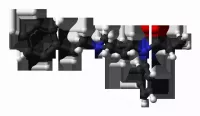
Fentanyl is a potent synthetic opioid analgesic significantly stronger than...
The Union of Soviet Socialist Republics USSR existed from to...
Pfizer Inc is a multinational pharmaceutical and biotechnology corporation headquartered...

San Francisco is a major commercial financial and cultural hub...
Trending

7 months ago Randy Travis and Wife Invest in Jackson's Metrocenter Mall Revitalization Project.
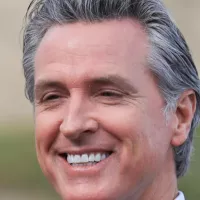
7 months ago Gavin Newsom faces challenges in final term amid budget concerns and 2028 ambitions.
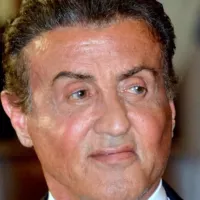
1 month ago Stallone Protected Himself with Body Armor for Snipes' Intense 'Demolition Man' Performance.
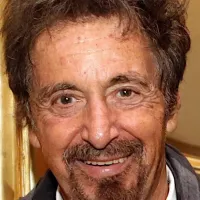
2 months ago Al Pacino's Godfather Streaming Success; Heat 2 Production Moves Forward with Mann
7 months ago Severe Thunderstorms Expected in Alabama: High Winds and Heavy Rainfall Possible

4 months ago Cillian Murphy returns in Netflix's 'Steve' as a headteacher with a complex role.
Popular

Candace Owens is an American conservative political commentator and author...

Ilhan Omar is an American politician currently serving as the...

XXXTentacion born Jahseh Dwayne Ricardo Onfroy was a controversial yet...

Tom Cotton is an American politician and Army veteran currently...

Kelsey Grammer is an accomplished American actor producer and singer...
The Kennedy Center Honors are annual awards recognizing individuals and...
